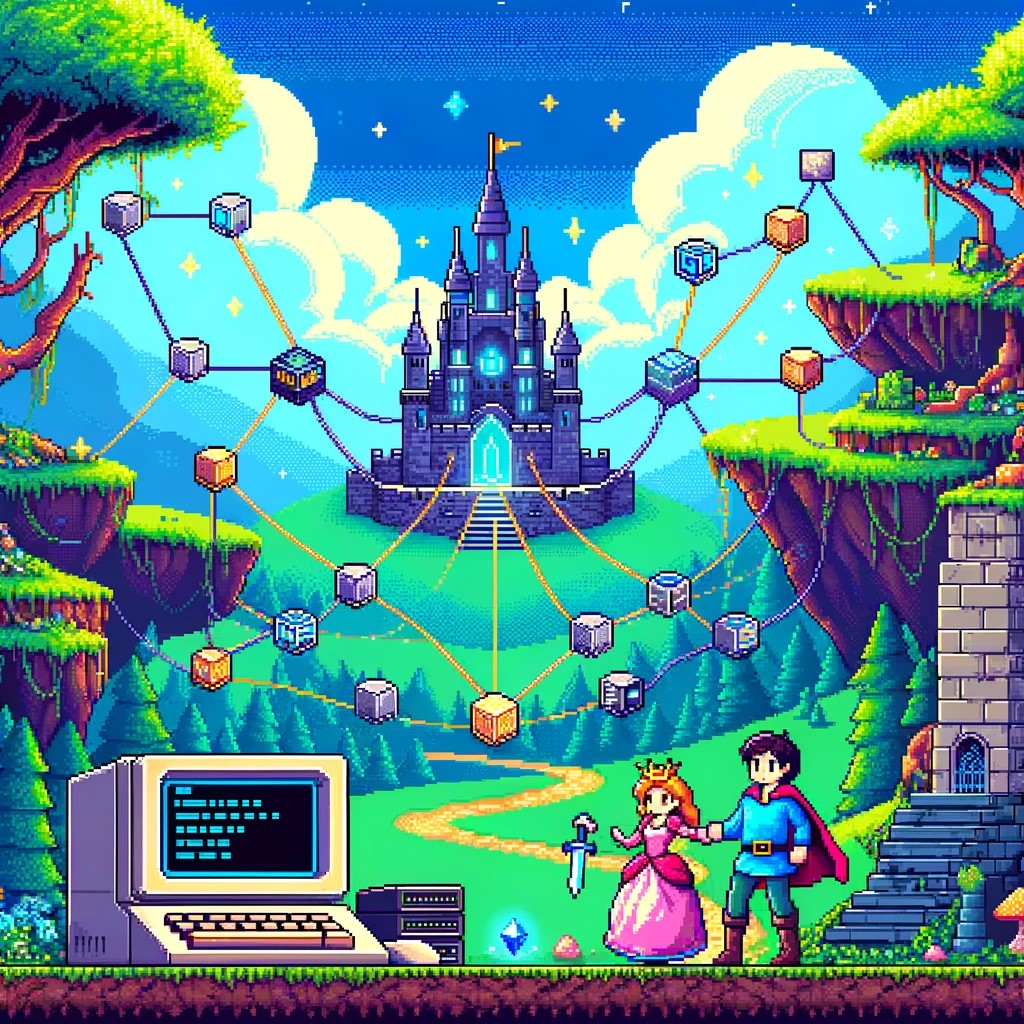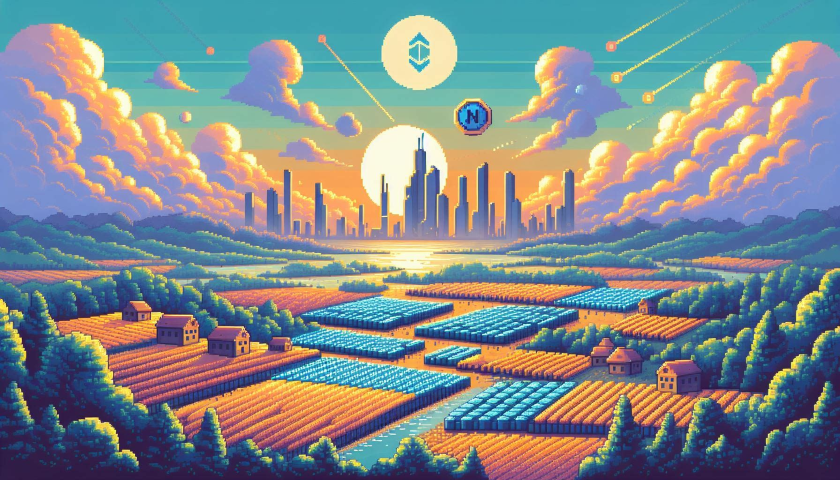
by Joche Ojeda | Jun 11, 2024 | Uncategorized
Getting Started with Stratis Blockchain Development: Running Your First Stratis Node
Stratis is a powerful and flexible blockchain development platform designed to enable businesses and developers to build, test, and deploy blockchain applications with ease. If you’re looking to start developing for the Stratis blockchain, the first crucial step is to run a Stratis node. This article will guide you through the process, providing a clear and concise roadmap to get your development journey underway.
Introduction to Stratis Blockchain
Stratis offers a blockchain-as-a-service (BaaS) platform, which simplifies the development, deployment, and maintenance of blockchain solutions. Built on a foundation of the C# programming language and the .NET framework, Stratis provides an accessible environment for developers familiar with these technologies. Key features of Stratis include smart contracts, sidechains, and full node capabilities, all designed to streamline blockchain development and integration.
Why Run a Stratis Node?
Running a Stratis node is essential for several reasons:
- Network Participation: Nodes form the backbone of the blockchain network, validating and relaying transactions.
- Development and Testing: A local node provides a controlled environment for testing and debugging blockchain applications.
- Decentralization: By running a node, you contribute to the decentralization and security of the Stratis network.
Prerequisites
Before setting up a Stratis node, ensure you have the following:
- A computer with a modern operating system (Windows, macOS, or Linux).
- .NET Core SDK installed.
- Sufficient disk space (at least 10 GB) for the blockchain data.
- A stable internet connection.
Step-by-Step Guide to Running a Stratis Node
1. Install .NET Core SDK
First, install the .NET Core SDK, which is necessary to run the Stratis Full Node. You can download it from the official .NET Core website. Follow the installation instructions for your specific operating system. I recommend having all DotNetCore SDKs because the source code for most of the Stratis solutions target really an old framework version like.NET Core 2.1 so it’s better to have multiple choices of framework in case you need to re-target for compatibility
.NET Core Versions
- .NET Core 3.1 (LTS)
- .NET Core 3.0
- .NET Core 2.2
- .NET Core 2.1 (LTS)
- .NET Core 2.0
- .NET Core 1.1
- .NET Core 1.0
Installation Links
Download .NET Core SDKs
2. Clone the Stratis Full Node Repository
Next, clone the Stratis Full Node repository from GitHub. Open a terminal or command prompt and run the following command:
git clone https://github.com/stratisproject/StratisFullNode.git
This command will download the latest version of the Stratis Full Node source code to your local machine.
3. Build the Stratis Full Node
Navigate to the directory where you cloned the repository:
cd StratisFullNode
Now, build the Stratis Full Node using the .NET Core SDK:
dotnet build
This command compiles the source code and prepares it for execution.
4. Run the Stratis Full Node
Once the build process is complete, you can start the Stratis Full Node. Use the following command to run the node:
cd Stratis.StraxD
dotnet run -testnet
This will initiate the Stratis node, which will start synchronizing with the Stratis blockchain network.
5. Verify Node Synchronization
After starting the node, you need to ensure it is synchronizing correctly with the network. You can check the node’s status by visiting the Stratis Full Node’s API endpoint in your web browser:
http://localhost:37221/api
here is more information about the possible ports for the API depending on which network you want to use (test or main) and which command did you use to start up the API
Swagger
To run the API in a specific port you can use the following code
StraxTest (dotnet run -testnet -apiport=38221)
http://localhost:38221/Swagger/index.html
StraxTest
http://localhost:27103/Swagger
StraxMain
http://localhost:17103/Swagger
You should see a JSON response indicating the node’s current status, including its synchronization progress.
Conclusion
Congratulations! You have successfully set up and run your first Stratis node. This node forms the foundation for your development activities on the Stratis blockchain. With your node up and running, you can now explore the various features and capabilities of the Stratis platform, including deploying smart contracts, interacting with sidechains, and building blockchain applications.
As you continue your journey, remember that the Stratis community and its comprehensive documentation are valuable resources. Engage with other developers, seek guidance, and contribute to the growing ecosystem of Stratis-based solutions. Happy coding!
Previous articles
Discovering the Simplicity of C# in Blockchain Development with Stratis | Joche Ojeda

by Joche Ojeda | Jun 10, 2024 | Blockchain, C#, Smart contracts, Stratis
Introduction
Blockchain technology has revolutionized various industries by providing a decentralized and secure way to manage data and transactions. At the heart of this innovation are smart contracts—self-executing contracts with the terms directly written into code. My journey into blockchain development began with the excitement of these possibilities, but it also came with challenges, particularly with the Solidity programming language. However, everything changed when I discovered the Stratis platform, which supports smart contracts using C#, making development much more accessible for me. In this article, I’ll share my experiences, challenges, and the eventual breakthrough that came with Stratis.
Challenges with Solidity
Solidity is the most popular language for writing smart contracts on Ethereum, but it has a steep learning curve. My background in programming didn’t include a lot of JavaScript-like languages, so adapting to Solidity’s syntax and concepts was daunting. The process of writing, testing, and deploying smart contracts often felt cumbersome. Debugging was a particular pain point, with cryptic error messages and a lack of mature tooling compared to more established programming environments.
The complexity and frustration of dealing with these issues made me seek an alternative that could leverage my existing programming skills. I wanted a platform that was easier to work with and more aligned with languages I was already comfortable with. This search led me to discover Stratis.
Introduction to Stratis
Stratis is a blockchain development platform designed to meet the needs of enterprises and developers by offering a simpler and more efficient way to build blockchain solutions. What caught my attention was its support for C#—a language I was already proficient in. Stratis allows developers to create smart contracts using C#, integrating seamlessly with the .NET ecosystem.
This discovery was a game-changer for me. The prospect of using a familiar language in a robust development environment like Visual Studio, combined with the powerful features of Stratis, promised a much smoother and more productive development experience.
Why Stratis Stood Out
The primary benefit of using C# over Solidity is the familiarity and maturity of the development tools. With C#, I could leverage the rich ecosystem of libraries, tools, and frameworks available in the .NET environment. This not only sped up the development process but also reduced the time spent on debugging and testing.
Stratis offers a comprehensive suite of tools designed to simplify blockchain development. The Stratis Full Node, for instance, provides a fully functional blockchain node that can be easily integrated into existing applications. Additionally, Stratis offers a smart contract template for Visual Studio, making it straightforward to start building and deploying smart contracts.
Another significant advantage is the support and community around Stratis. The documentation is thorough, and the community is active, providing a wealth of resources and assistance for developers at all levels.
Conclusion
Transitioning from Solidity to Stratis was a pivotal moment in my blockchain development journey. The challenges I faced with Solidity were mitigated by the ease and familiarity of C#. Stratis provided a robust and efficient platform that significantly improved my development workflow.
In the next article, I will dive into the practical steps of setting up the Stratis development environment. We’ll cover everything you need to get started, from installing the necessary tools to configuring your first Stratis Full Node. Stay tuned for a detailed guide that will set the foundation for your journey into C# smart contract development.

by Joche Ojeda | Apr 21, 2024 | Blockchain
Understanding Non-Fungible Tokens (NFTs)
What are NFTs?
Non-Fungible Tokens (NFTs) are a unique type of digital asset. Each NFT is distinct and cannot be replicated, which differentiates them from cryptocurrencies like Bitcoin or Ethereum, where each unit is identical.
What Can NFTs Represent?
NFTs can represent a wide array of digital and real-world items, including digital artwork, music, in-game items, videos, and even real-world assets like property rights.
Smart Contracts and Minting NFTs
The creation of NFTs involves the use of smart contracts, which are self-executing contracts with the terms of the agreement directly written into code. These smart contracts are used during the minting process, which is the term used for creating an NFT.
OpenZeppelin Contracts
OpenZeppelin provides a library of open-source smart contracts that are secure and have been thoroughly tested. These contracts are often used for creating NFTs and include implementations of standards like ERC-721 and ERC-1155. OpenZeppelin contracts are considered the gold standard for smart contract development and are used by many in the industry.
Fungible vs Non-Fungible Tokens
Fungible tokens are interchangeable and identical to each other. For instance, cryptocurrencies like Bitcoin or Ethereum are fungible tokens. If you have 1 Bitcoin, it’s the same as any other 1 Bitcoin.
On the other hand, non-fungible tokens (NFTs) are unique and cannot be interchanged with any other token. Each NFT has a distinct value based on its attributes. For example, consider a ticket to a concert. Each ticket (an NFT in this case) is unique based on its specific information such as the seat number, section, and row.
Minting an NFT
Minting an NFT is the process of creating a unique digital asset on a blockchain. This process involves transforming digital data into a unique digital asset, or NFT, that is recorded on the blockchain.
In conclusion, NFTs represent a new frontier in the digital world, offering a unique way to own and trade digital and real-world assets. Through the use of blockchain technology, smart contracts, and standards provided by libraries like OpenZeppelin, NFTs are changing the way we think about ownership and trade in the digital age.

by Joche Ojeda | Apr 18, 2024 | Carbon Credits, Uncategorized
As we face the urgent need to address climate change, innovative solutions are crucial. One such solution lies in using blockchain technology, similar to Ethereum, Polygon, or TON, to manage carbon credits. In this article, we’ll break down what carbon credits are, how blockchain can revolutionize their management, and why it matters to you.
What Are Carbon Credits?
Carbon credits are like digital tokens representing a company’s right to emit a specific amount of carbon dioxide. The goal is to reduce overall emissions by making these credits tradeable. Here’s how blockchain can help:
- Transparency and Trust: Blockchain operates as a decentralized digital ledger, recording transactions securely and transparently. This ensures that every carbon credit is unique and not double-counted. Imagine it as a tamper-proof ledger that tracks emissions accurately.
- Efficiency: Automating the tracking and management of carbon credits using smart contracts reduces errors and speeds up the process. It’s like having an automated carbon accountant!
- Security: Blockchain ensures the integrity of each credit. No one can manipulate the system, making it reliable for investors and companies alike.
Use Cases
- Carbon Credit Trading: Blockchain can amplify voluntary carbon markets, channeling billions of dollars toward green investments. It allows seamless trading of credits, benefiting both the environment and investors.
- Parametric Insurance: Smart contracts can facilitate the adoption of parametric insurance for climate events. Imagine insurance payouts triggered automatically based on predefined conditions (e.g., extreme weather events).
- Open Data Infrastructure: Blockchain can create an open data infrastructure for climate information. Reliable climate data helps businesses identify investment opportunities and assess risks related to climate change.
Why Should You Care?
As an American around 50 years old, you’ve witnessed environmental changes. Blockchain can empower you to:
- Invest Responsibly: Understand where your investments go and support companies with sustainable practices.
- Track Your Carbon Footprint: Imagine a personal carbon ledger that shows your impact and helps you make greener choices.
- Advocate for Change: Educate others about blockchain’s potential in combating climate change.
Remember, blockchain isn’t just for tech enthusiasts—it’s a tool for everyone to create a greener future. So, let’s embrace it and contribute to a more sustainable world! ?✨
Previous Articles
Carbon Sequestration: A Vital Process for Climate Change Mitigation
Understanding Carbon Credit Allowances
Carbon Credits 101

by Joche Ojeda | Apr 16, 2024 | Blockchain
Understanding Ethereum and Smart Contracts
The Ethereum Virtual Machine (EVM) is akin to a global, decentralized computer that exists across thousands of individual computers worldwide. This “computer” executes programs known as smart contracts, which are automated contracts whose terms are written directly into code, allowing them to operate independently of intermediaries.
How Smart Contracts Work
Smart contracts streamline processes such as digital agreements and transactions. For example, in a leasing agreement, a smart contract can automate monthly rent payments from a tenant’s digital wallet to a landlord’s wallet, adhering to the terms with precision and reliability. This automation is set into motion through the following steps:
- Creation: A developer writes the contract in a specific programming language.
- Deployment: The contract is uploaded to the Ethereum blockchain.
- Execution: It is then executed automatically by the EVM upon being triggered by transactions.
Comparing Blockchain Platforms
While Ethereum was the pioneer, other blockchains like Solana, Polygon, and TON (The Open Network) also support smart contracts, each offering unique benefits.
Solana
- High Speed: Solana processes thousands of transactions per second, offering a significant speed advantage over Ethereum.
- Low Costs: Its efficiency ensures that transaction fees are minimal, fostering cost-effective operations.
- Scalability: The design allows scaling with hardware advancements, maintaining high-speed capabilities.
Polygon
- Ethereum Compatibility: Acts as a side-chain to Ethereum, facilitating faster and cheaper transactions.
- Low Transaction Fees: By processing transactions off the main Ethereum chain, it reduces costs significantly.
- Speed: Provides quicker transaction processing times, enhancing the user experience.
TON (The Open Network)
- Speed and Efficiency: Designed for quick processing at low costs, suitable for high-load applications.
- Versatility: Supports features like user-friendly wallet services and decentralized storage.
- User-Friendliness: Focuses on accessibility, aiming to bring blockchain to the mainstream.
These platforms enhance user experience through faster transactions and reduced costs, support high transaction volumes, and offer security and reliability due to their decentralized nature. Each blockchain serves different use cases, allowing developers to choose based on their specific needs for efficiency and functionality.




